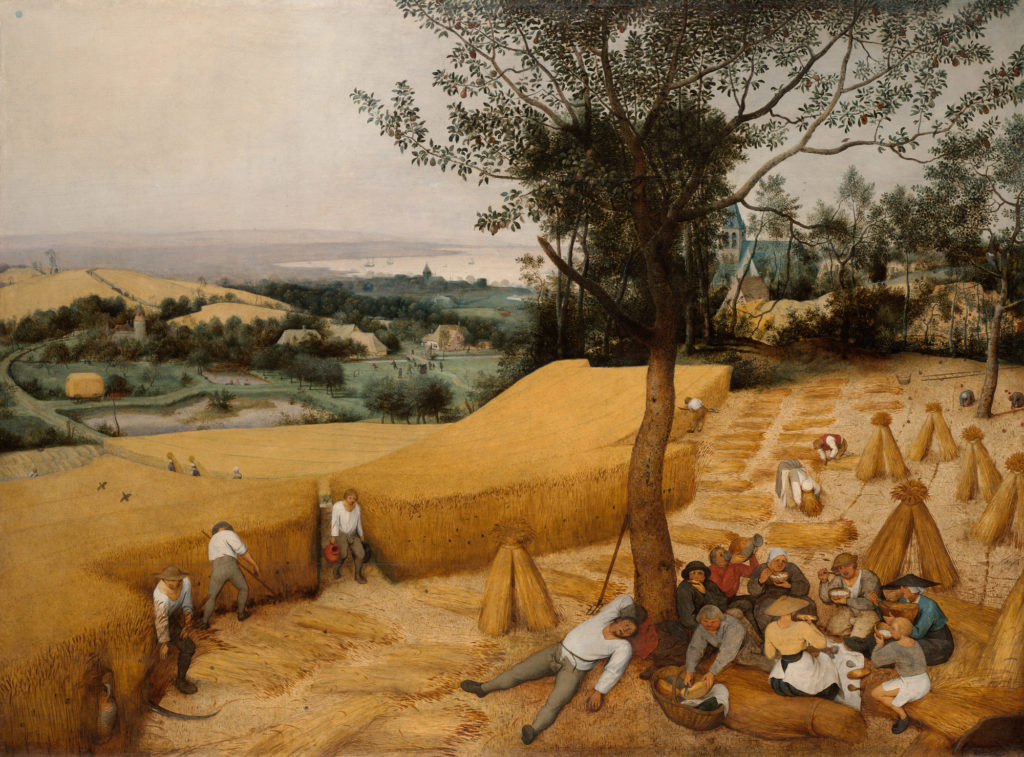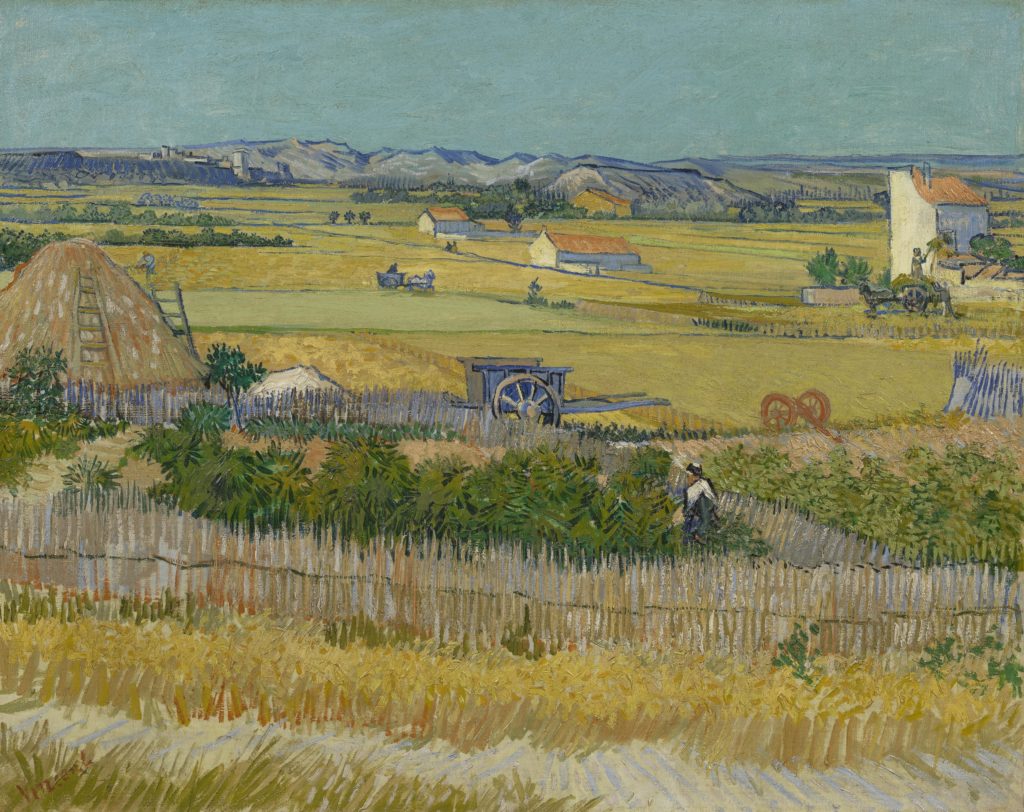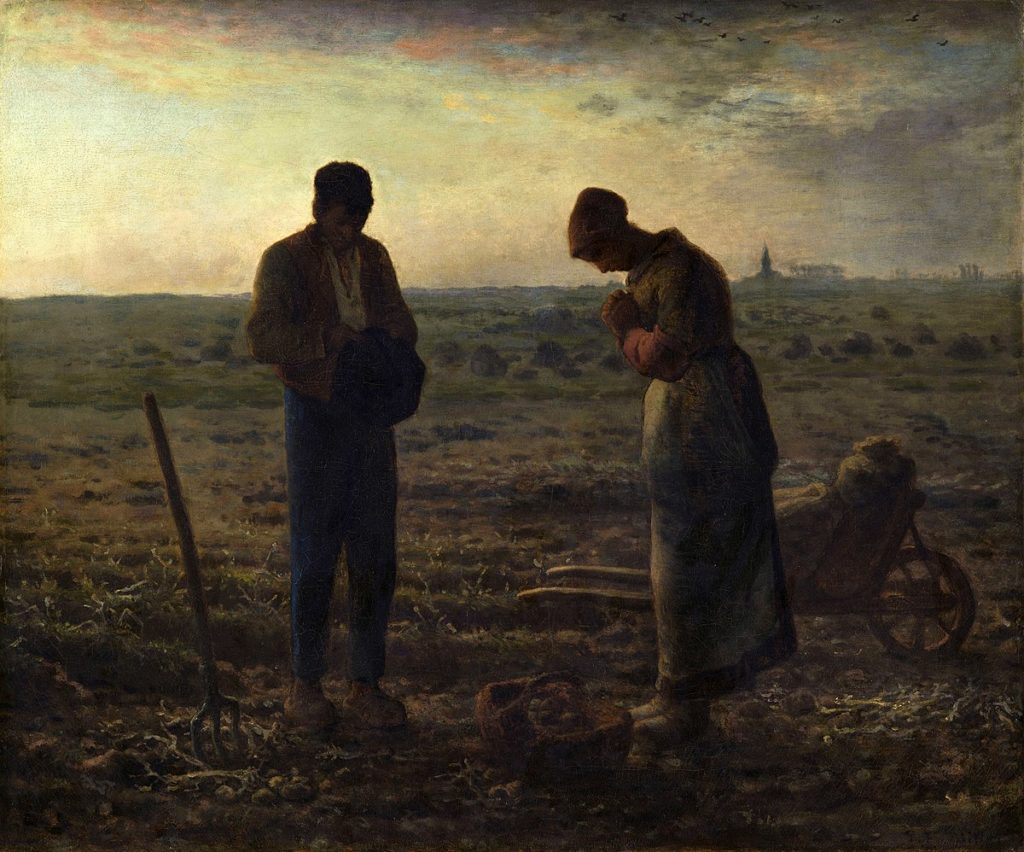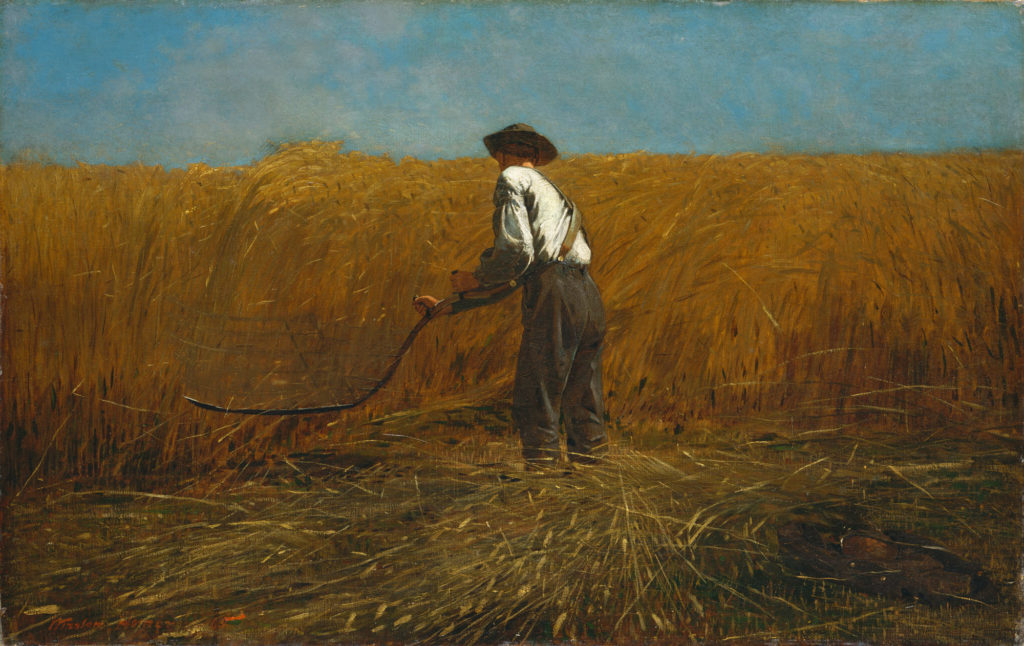René Magritte in 10 Paintings
René Magritte (1898–1965) stood at the heart of Surrealism, yet his art leaned toward a more figurative vision. He transformed ordinary objects...
Errika Gerakiti 21 November 2025
The leaves are falling here in Wales. The last of the fruit and veg is being taken in, and the nights are getting darker. In the pagan calendar, both Autumn Equinox and Samhain have passed. This is the perfect moment to think about the harvest of the year—whether literal, spiritual, or emotional. Here are a few famous harvest artworks to get you in the mood!

This painting is one in a series of six works, that depict different times of the year. We see the harvest in full swing, with the focus on tiny peasants and their work in vast landscapes. The Metropolitan Museum of Art calls this painting a ‘watershed in the history of Western art’ and ‘the first modern landscape.’ A sense of distance is conveyed with the workers carrying sheaves of wheat or resting in the foreground, and the hazy grey of the bay with ships far away.

Vincent van Gogh was also fascinated by working landscapes—they are a recurring theme in his art. He considered this particular one to be one of his most successful paintings. We see the wheat field half mowed, ladders and carts, and a reaper working in the background. I like this as a contrast to wet Wales—here you can almost feel the heat as you look at the azure sky and the yellow and green landscape. Van Gogh completed ten paintings and five drawings in just over a week at this point, until a heavy storm brought the harvest season to an end.

Jean Francois-Millet is perhaps best known for his paintings The Potato Harvest and The Gleaners. But The Angelus is perhaps more interesting. The painting depicts two peasants bowed in a field over a basket of potatoes. Thomas Gold Appleton, who commissioned the painting failed to take possession of it, so Millet added a steeple and changed the initial title of the work, Prayer for the Potato Crop to The Angelus.
Some say this is a ritualized moment of meditation and prayer taking place at the end of a days work as dusk rolls in. Others say the painting is a political statement, with Millet viewed as a socialist in solidarity with the impoverished workers. Salvador Dali had an even more unusual reading. He saw a print of this painting and insisted that this was a funeral scene and that the basket was originally painted as an oblong box visible on the ground. He contested that this was not a potato basket but the coffin of a dead child.

Let us move to America now. Against a backdrop of the surrender of General Robert E Lee and the assassination of President Abraham Lincoln, Winslow Homer’s canvas depicts a farmer at work, his back to us, his concentration focused on the work. The discarded jacket, knapsack, and canteen reveal him to be a Union war veteran. His old-fashioned scythe evokes the Grim Reaper, recalling the war’s harvest of death. But to counter that we have the golden field, the blue sky, and the bountiful wheat being gathered in. This powerful image references both life and death—a meditation on a country’s sacrifices but also its potential for recovery.

In all previous paintings, the landscape and the people give each other meaning. But let me leave you, as the moon rises over this hillside, with an iconic image from George Mason.
Whilst in Italy, British artist George Mason learned to paint in the Etruscan style—painting a picture in monochrome before adding color. In this feast of autumnal colors, we see farmworkers leaving the fields as the harvest moon rises.
DailyArt Magazine needs your support. Every contribution, however big or small, is very valuable for our future. Thanks to it, we will be able to sustain and grow the Magazine. Thank you for your help!